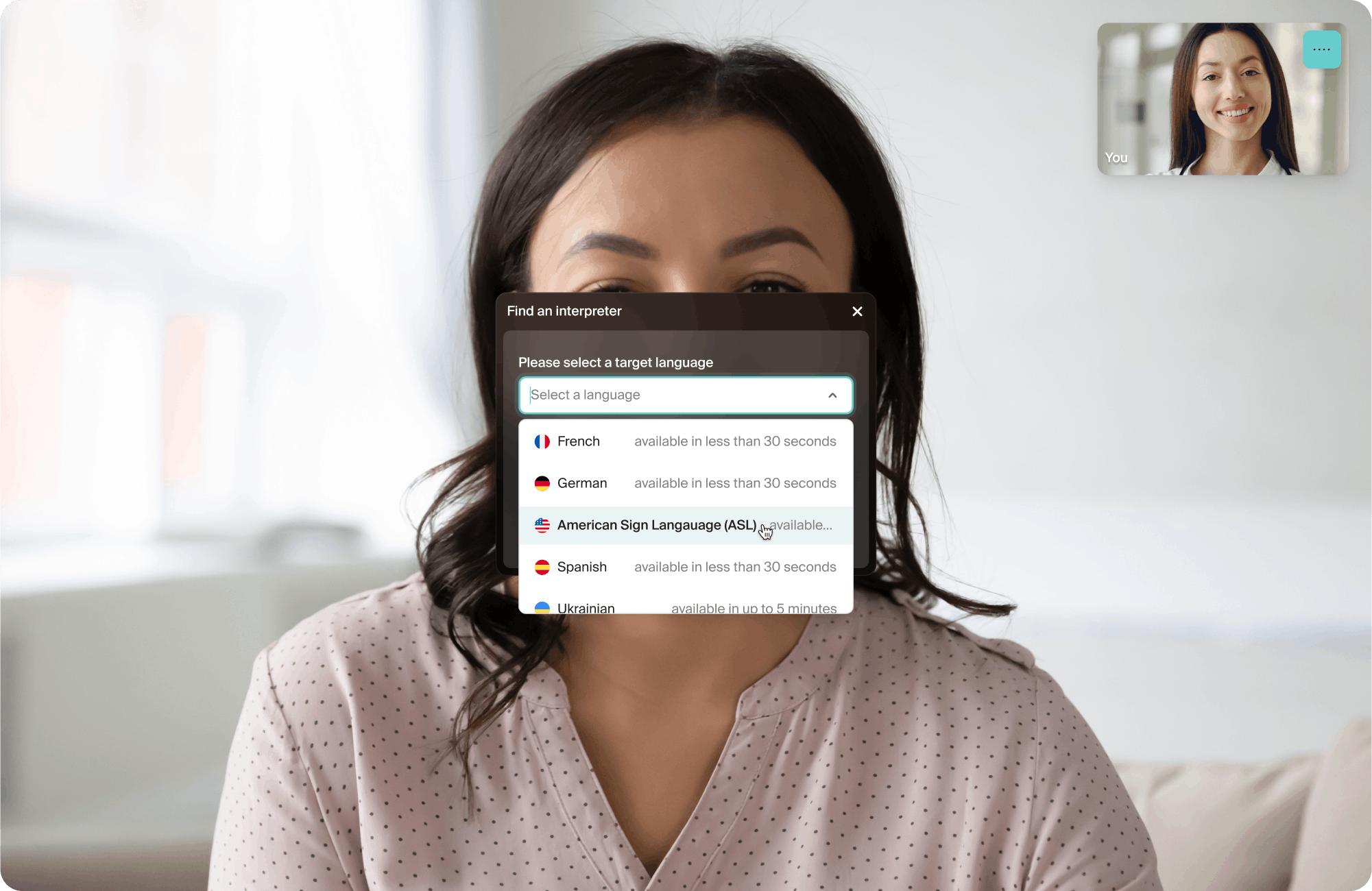
In the bustling atmosphere of the hospital, a young couple, both deaf, anxiously awaited the birth of their child. Throughout their pregnancy journey, American Sign Language interpreters facilitated communication between the couple and medical staff, addressing concerns, answering questions, and sharing in the joy of welcoming their newborn into the world.
With the support of Voyce ASL medical interpreter, Patricia Wiest, the couple navigated a challenging labor and delivery process with confidence, ensuring they were fully informed and involved every step of the way.
Meet Patricia, a Voyce medical ASL interpreter
Patricia Wiest first became interested in learning American Sign Language (ASL) because she wanted to communicate with a colleague at work. But, her interest in connecting with the Deaf community didn't end there.
Patricia went on to become a professional ASL interpreter. She has built experience working as a video relay service interpreter (where video is used to interpret phone conversations) as well as providing in-person medical interpretation services for local healthcare organizations.
Today, she uses her vast experience and dedication as an on-demand medical interpreter at Voyce, a leading provider of medical interpretation and doxy.me partner.
Language accessibility in healthcare: Patricia’s positive impact
For the family who experienced a challenging labor and delivery, Patricia was virtually “right there with them the entire time” on an iPad.
“The nurses carried the iPad everywhere," said Patricia, enabling real-time translation between the medical team and the family. "They would not have had a way to process any of it without an interpreter."
Providing the new parents with a deeper sense of inclusion and understanding during a life-changing medical event is one of many examples of how Patricia empowers deaf and hard-of-hearing patients.
Best practices when adding an ASL interpreter to a telehealth call
Having the right setup makes communicating effectively with a virtual interpreter easy.
1. Find a room with a strong Wi-Fi signal: Know where Wi-Fi reception is strongest in your building.
2. Create optimal visibility: ASL interpretation requires that the patient and interpreter are able to clearly see each other while they sign. If you are in-person with your patient and using a virtual interpreter, ensure the lights are facing you and your patient. Backlighting can make you and the patient dark and hard to see.
3. Check audio quality: Interpreters need to be able to hear and speak to you, the provider. Make sure your audio is working and the room is quiet.
Tip: Test your audio and video quality before the call starts
4. Consider a mobile device: If you move between rooms, consider using a tablet to ensure the interpreter can always see and hear, even on the go. A floor stand on wheels can also be a helpful tool.
Improving access to care with telehealth: Any device, anywhere, anytime
"Before becoming an on-demand telehealth interpreter, I received many last-minute midnight phone calls to go to an ER," said Patricia. "Telehealth ensures that patients will have an interpreter."
Doxy.me paid plans allow you to add a qualified medical interpreter, exactly when you need them. Voyce’s professional interpreters generally join the call within 20 seconds or less and cost $0.99 per minute. With over 70 languages available over video, clear and effective patient communication is only moments away.

Learn more about how to use doxy.me's Voyce integration
Ensure equal access for all the populations you serve
ASL medical interpreters allow your patients to have immediate access to quality care. In fact, having access to doxy.me's Voyce integration means that you can provide support not only for those who are deaf or hard of hearing, but anyone with limited English proficiency (LEP).
Learn more about ways to improve language access by reading Maximize language accessibility: 3 federal compliance tips